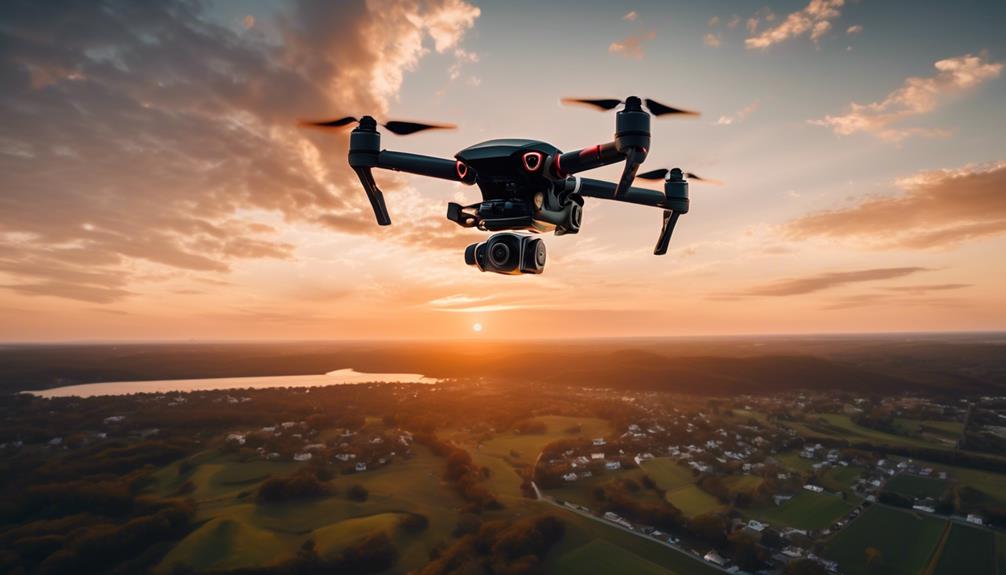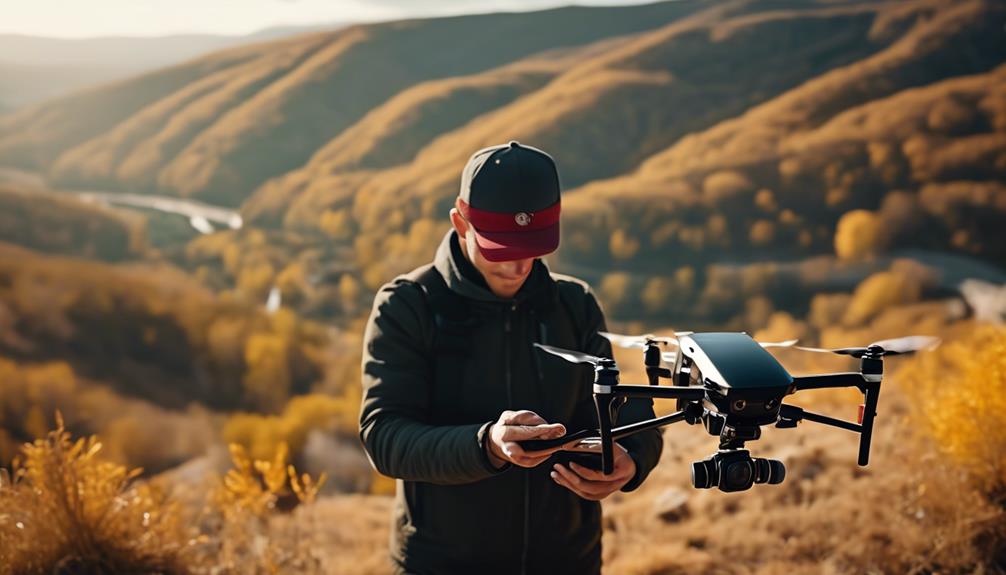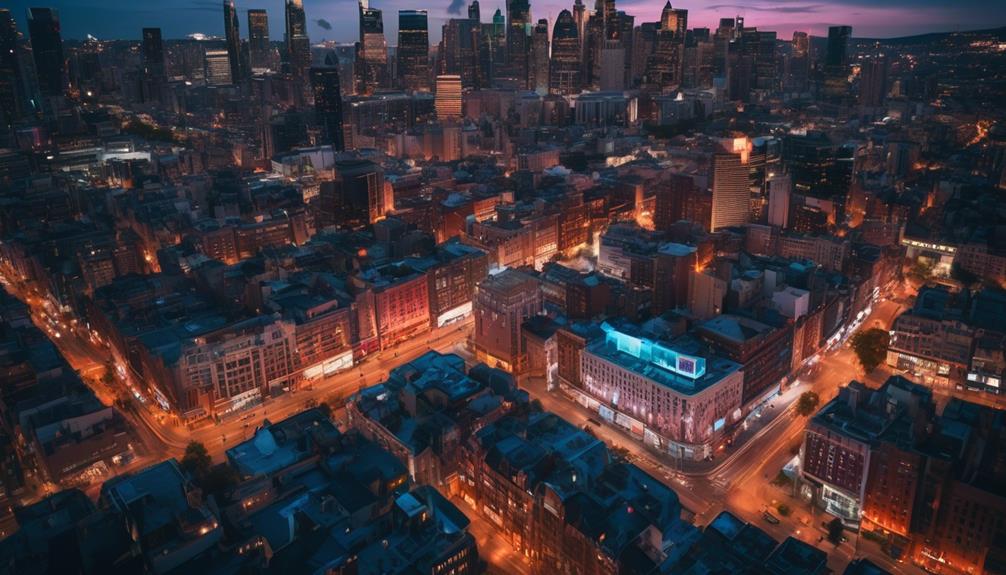Please note this post may contain affiliate links picked by me (Jay) that I have deemed may be of interest or relevant to you the reader of this.
These links do not affect the cost of the thing if you decide to purchase but i may get a little money if you choose to purchase.
For more information on my affiliate link policy click here.
Have you ever marveled at those breathtaking aerial drone photographs and wondered how you could capture such stunning shots yourself?
Well, fear not, fellow beginner drone enthusiasts! Today, I am here to share with you the top three aerial drone photography tips that will elevate your skills and make your shots soar to new heights.
So buckle up, because we're about to embark on an exhilarating journey of discovery and mastery in the world of aerial drone photography. Get ready to unlock the secrets of equipment essentials, master flight techniques, and learn the art of composition and framing that will leave your audience in awe.
Trust me, you won't want to miss out on these game-changing tips that will take your drone photography to the next level.
Key Takeaways
- Choosing the right camera settings is essential for aerial photography, including adjusting shutter speed, ISO, and aperture.
- Understanding and following drone regulations is crucial, including flight restrictions, privacy concerns, and obtaining necessary permits.
- Investing in reliable drone and camera equipment, as well as having extra batteries and memory cards, is important for extended flight time and storage capacity.
- Mastering drone flight techniques, such as familiarizing yourself with controls, practicing in open areas, and troubleshooting common issues, is essential for successful aerial photography.
Equipment Essentials for Aerial Drone Photography
When it comes to aerial drone photography, having the right equipment is essential for capturing stunning images and videos from above. As a beginner, it can be overwhelming to choose the right gear, but fear not! Let me guide you through the equipment essentials you need to kick-start your aerial photography journey.
One of the first things you need to consider is choosing the right camera settings for aerial photography. With drones, you have the flexibility to adjust settings such as shutter speed, ISO, and aperture. Experimenting with different settings will help you achieve the desired effect in your photos. Don't be afraid to play around and discover what works best for you.
Equally important is understanding and following drone regulations. As technology advances, it's crucial to stay updated on the rules and regulations governing the use of drones. Different countries and regions have specific guidelines regarding flight restrictions, privacy concerns, and permits. Familiarize yourself with these regulations to ensure a safe and legal flying experience.
Mastering Drone Flight Techniques
To become a skilled drone pilot, mastering flight techniques is essential for capturing breathtaking aerial footage and photographs. As a beginner, it's important to familiarize yourself with the basic controls of the drone and practice flying in an open area away from obstacles.
But even the most experienced pilots encounter common issues during their flights. Here are some troubleshooting tips to help you overcome these challenges.
One common issue is losing sight of the drone. To avoid this, always keep your drone within your line of sight and fly in daylight conditions. If you lose sight of the drone, try adjusting the camera angle or using the return-to-home function if available.
Another issue is shaky footage. To capture smooth and cinematic aerial footage, make sure to fly in calm weather conditions and avoid sudden movements. Using a gimbal stabilizer can also help stabilize your footage.
Lastly, be aware of any local regulations or restrictions when flying your drone. Always fly in designated areas and respect the privacy of others.
Composition and Framing Techniques for Stunning Aerial Shots
Now that you have mastered the flight techniques and troubleshooting tips for your drone, let's dive into the exciting world of composition and framing techniques for capturing stunning aerial shots.
As an innovative drone photographer, you have the unique ability to capture breathtaking views from above. To make your photographs truly stand out, it's important to pay attention to lighting techniques. Since the position of the sun can greatly impact the overall mood and feel of your images, try experimenting with different times of day to capture dramatic aerial photographs.
The golden hour, which occurs during sunrise and sunset, offers soft, warm light that can add depth and dimension to your shots. Additionally, using the drone's position and angle to manipulate shadows can create interesting and dynamic compositions.
Once you have captured your aerial photographs, it's time to enhance them through post-processing. This step is crucial for achieving the desired look and feel of your images. Start by adjusting the exposure, contrast, and saturation to bring out the details and colors in your shot. Consider using filters or presets to add a unique style or mood to your photographs.
Don't be afraid to experiment and push the boundaries of creativity. Remember, the goal is to create stunning aerial shots that leave a lasting impression on your audience.
Frequently Asked Questions
How Do I Legally Fly a Drone for Aerial Photography?
I legally fly a drone for aerial photography by following the drone photography regulations set by the authorities.
It's important to check and comply with the local laws and obtain any necessary drone photography permits. This ensures that I can capture stunning aerial shots while staying within the legal boundaries.
What Are the Best Locations for Capturing Stunning Aerial Shots?
When it comes to capturing stunning aerial shots, the key is finding the best locations. From towering skyscrapers to breathtaking natural landscapes, the possibilities are endless.
But it's not just about the location; having the right equipment for aerial photography is essential. Investing in a high-quality drone with a good camera will ensure clear and sharp images.
And once you have your shots, don't forget to use editing and enhancing techniques to make them truly stand out.
How Can I Prevent My Drone From Crashing or Getting Damaged During Flight?
To prevent my drone from crashing or getting damaged during flight, I prioritize drone maintenance and practice emergency landing techniques.
Regularly checking and cleaning the propellers, ensuring the battery is fully charged, and updating the firmware are essential.
Additionally, I always have a clear understanding of the drone's flight capabilities and limitations, and I practice emergency landing maneuvers in a controlled environment.
Are There Any Specific Weather Conditions That Are Ideal for Aerial Drone Photography?
When it comes to aerial drone photography, ideal weather conditions can make all the difference in capturing the best shots. Clear skies and gentle winds are key factors to consider. Avoid shooting in harsh sunlight as it can create harsh shadows. Instead, opt for golden hour or blue hour for softer, more flattering light.
Don't forget to check the weather forecast and plan your shoot accordingly. With the right weather conditions, you'll be able to capture stunning aerial shots that will wow your audience.
What Are the Safety Precautions I Need to Take While Flying a Drone for Photography Purposes?
When it comes to drone photography, safety is of the utmost importance. There are a few essential guidelines that I always follow to ensure a safe and successful flight.
Firstly, it's crucial to familiarize yourself with the local regulations and laws regarding drone usage.
Secondly, always conduct a pre-flight check to ensure that your drone is in proper working condition.
Lastly, maintain a safe distance from people, buildings, and other aircraft to avoid any potential accidents.
Conclusion
So there you have it, my fellow newbie drone enthusiasts! With these top three tips, you'll be soaring through the skies and capturing jaw-dropping aerial shots in no time.
Remember, always have the right equipment, master those flight techniques, and get creative with your compositions.
Now go out there and conquer the world of aerial drone photography like a boss!
Happy flying!


